1tb Hdd 120gb Ssd Enough for Video Editing
Reading Time: 13 minutes
The best M.2 SSD for video editing and photography in 2021, is the one that fits your budget and meets your editing needs. By choosing the right SSD, you will increase significantly your computer's performance, import/export times in software such as Adobe Premiere Pro, Lightroom, Photoshop, Capture One, etc., and improve your workflow!
- Budget-friendly 2.5″ SSD: Select a 2.5″ SATA III SSD for speeds up to 600MB/s.
- Budget-friendly M.2 SSD: Choose a Generation 3x M.2 for speeds up to 3500MB/s.
- High-performance M.2 SSD: Get a Generation 4x M.2 for speeds up to 7500MB/s.
FEATURED – EDITOR'S CHOICE
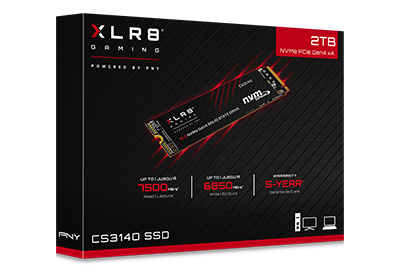
The PNY XLR8 CS3140 is the fastest PCI Express x4 Solid State Drive on the market with read speed at 7500MB/s, write speed at 6850MB/s, and a 5-Year Warranty!
Is M.2 NVMe faster than SSD?
An M.2 NVMe SSD (Top speed 7500MB/s) is 10x times faster than a 2.5″ SATAIII SSD (Top speed 650MB/s). The reason lies in the connectivity. Standard SSDs use an older SATAIII interface while the newer M.2 NVMe SSDs connect directly via PCIe.
This will increase dramatically the speed of your photo/video editing process. The newer NVMe (Non-Volatile Memory Express) SSD drives give you better loading and export times in Adobe Lightroom, Capture One, or any other photo editing software.
Should I buy SSD or NVMe M.2?
The best SSD for photo editing or video editing is the one your computer's motherboard supports (check manual). Initially, you can get a standard SSD with speeds up to 650MB/s. Of course, with newer motherboards supporting PCIe 4.0, you can install the newest NVMe M.2 Generation 4 SSDs to reach speeds up to 7500 MB/s!
With standard SSDs you get to pay less (more budget-friendly) and it's easier to install on another desktop or laptop since 2.5″ SATA III is the same interface used in almost all computers of the last decade. The only disadvantage is speed but if you're upgrading from an HDD your editing process will improve significantly!
Table of contents:
- Best Internal NVMe M.2 GEN 4 SSDs (NEW-2021)
- Best Internal NVMe M.2 GEN 3 SSDs
- Best Internal 2.5″ SSD Drives Sata III 6GB/Sec
- Best External – Portable SSDs USB 3.2, Type-C
- M.2 vs SSD – Which is Best?
- M.2 vs NVMe – What are the main differences
- Is M.2 or SSD better for video editing?
- Is SSD or HDD better for video editing?
- Is 512GB SSD enough for video editing?
- Does video editing need more RAM or SSD?
- What graphics card do I need for 4K video editing?
- Why PNY CS3140 M.2 SSD is best for photographers?
- Why WD SN850 Black is the best SSD for video editing?
- Speed Tests with older M.2 SSDs
- Where to buy
Note: Before you buy a new SSD or M.2 drive, make sure your motherboard supports it!
1. Best NVMe M.2 GEN 4 SSDs for Video Editing (NEW – 2021)
- PNY XLR8 CS3140 NVMe Gen4 M.2 SSD (Fastest)
- WD BLACK SN850 NVMe Gen4 M.2 SSD (Fastest)
- SAMSUNG EVO 980 Pro NVMe Gen4 M.2 SSD (Fastest)
- PNY XLR8 CS3040 NVMe Gen4 M.2 SSD
- CORSAIR MP600 NVMe Gen4 M.2 SSD
- Gigabyte AORUS NVMe Gen4 M.2 SSD
- SEAGATE FIRECUDA 520 – Gen4 M.2 SSD
- T-FORCE CARDEA ZERO Z440Gen4 M.2 SSD
- INLAND Performance 3D TCL NAND Gen4 M.2 SSD
- CORSAIR MP600 CORE NVMe Gen4 M.2 SSD

PNY XLR8 CS3140 Gen4 x4 – 1TB, 2TB
Speed up to 7500MB/s

WD BLACK SN850 – 250GB, 500GB, 1TB, 2TB
Speed up to 7000MB/s

SAMSUNG 980 Pro – 250GB, 500GB, 1TB, 2TB
Speed up to 7000MB/s

PNY XLR8 CS3040 – 500GB, 1TB, 2TB
Speed up to 5600MB/s

Corsair MP600 – 500GB, 1TB, 2TB
Speed up to 5000MB/s

Gigabyte AORUS – 500GB, 1TB, 2TB
Speed up to 5000MB/s

Seagate Firecuda 520 – 500GB, 1TB, 2TB
Speed up to 5000MB/s

T-FORCE CARDEA ZERO Z440 – 1TB, 2TB
Speed up to 5000MB/s

Inland Performance M.2 SSD – 500GB, 1TB, 2TB
Speed up to 5000MB/s

Corsair MP600 CORE M.2 SSD – 1TB, 2TB
Speed up to 5000MB/s
| M.2 NVMe SSD GEN 4 | READ SPEED (MB/s) | WRITE SPEED (MB/s) | WARRANTY |
| PNY XLR8 CS3140 | 7500 | 6850 | 5 YEARS |
| WD BLACK SN850 | 7000 | 5300 | 5 YEARS |
| SAMSUNG 980 PRO | 7000 | 5100 | 5 YEARS |
| PNY XLR8 CS3040 | 5600 | 4300 | 5 YEARS |
| CORSAIR MP600 | 4950 | 4250 | 5 YEARS |
| GIGABYTE AORUS | 5000 | 4400 | 5 YEARS |
| SEAGATE FIRECUDA 520 | 5000 | 4400 | 5 YEARS |
| T-FORCE CARDEA ZERO Z440 | 5000 | 4000 | 5 YEARS |
| INLAND PERFORMANCE | 5000 | 4300 | 3 YEARS |
| CORSAIR MP600 CORE | 4950 | 3800 | 5 YEARS |
Also Read: BEST LAPTOP FOR PHOTO EDITING IN 2021
2. Best PCI-E NVMe M.2 GEN 3 SSDs for Photo Editing
- XPG GAMMIX S11 Pro 3D NAND NVMe SSD Gen3 M.2
- Corsair Force Series MP510 NVMe SSD Gen 3 M.2
- Samsung 970 EVO Plus NVMe SSD Gen 3 M.2
- WD BLACK SN750 NVMe SSD Gen 3 M.2
- Crucial P5 3D NAND NVMe SSD Gen 3 M.2
- PNY XLR8 CS3030 NVMe SSD Gen 3 M.2
- Seagate Barracuda 510 NVMe SSD Gen3 M.2
- Silicon Power 3D NAND NVMe SSD Gen3 M.2
- WD Blue SN550 NVMe SSD Gen3 M.2 (Best Value)

XPG GAMMIX S11 Pro 3D NAND – 256GB, 512GB, 1TB, 2TB
Speed up to 3500MB/s

Samsung 970 Evo Plus – 250GB, 500GB, 1TB, 2TB
Speed up to 3500MB/s

PNY XLR8 CS3030 – 250GB, 500GB, 1TB, 2TB
Speed up to 3500MB/s

Corsair Force Series MP510 – 256GB, 512GB, 1TB, 2TB
Speed up to 3480MB/s

WD BLACK SN750 – 250GB, 500GB, 1TB, 2TB
Speed up to 3470MB/s

Crucial P5 – 250GB, 500GB, 1TB, 2TB
Speed up to 3400MB/s

Seagate Barracuda 510 – 250GB, 500GB, 1TB
Speed up to 3400MB/s
![]()
Silicon Power – 256GB, 512GB, 1TB, 2TB
Speed up to 3400MB/s

Crucial P2 – 250GB, 500GB, 1TB, 2TB
Speed up to 2400MB/s

Western Digital WD Blue SN550 NVMe PCI-E Gen3x 4 – 256GB, 512GB, 1TB, 2TB
Speed up to 2400MB/s
| M.2 NVMe SSD GEN 3 | READ SPEED (MB/s) | WRITE SPEED (MB/s) | WARRANTY |
| XPG GAMMIX S11 Pro | 3500 | 3000 | 5 YEARS |
| SAMSUNG 970 EVO Plus | 3500 | 3300 | 5 YEARS |
| PNY XLR8 CS3030 | 3500 | 3000 | 5 YEARS |
| CORSAIR Force Series MP510 | 3480 | 3000 | 5 YEARS |
| WD BLACK SN750 | 3470 | 3000 | 5 YEARS |
| CRUCIAL P5 | 3400 | 3000 | 5 YEARS |
| SEAGATE BARRACUDA 510 | 3400 | 3000 | 5 YEARS |
| SILICON POWER | 3400 | 3000 | 5 YEARS |
| CRUCIAL P2 | 2400 | 1900 | 5 YEARS |
| WD BLUE SN550 | 2400 | 1750 | 5 YEARS |
3. Best SSD SATAIII For Photo Editing (120GB – 4TB)
- Seagate BarraCuda 2.5″ SATAIII 120 SSD
- Samsung 870 EVO 2.5″ SATAIII SSD
- WD Blue 3D NAND 2.5″ SATAIII SSD
- PNY CS900 3D NAND 2.5″ SATAIII SSD
- Crucial MX500 3D NAND 2.5″ SATAIII SSD
- ADATA SU635 3D NAND 2.5″ SATAIII SSD
- SanDisk SSD PLUS 3D NAND 2.5″ SATAIII SSD
- Kingston 240GB A400 2.5″ SATAIII SSD
- Silicon Power 3D NAND A55 SLC 2.5″ SATAIII SSD

Seagate BarraCuda 120 – 250GB, 500GB, 1TB, 2TB
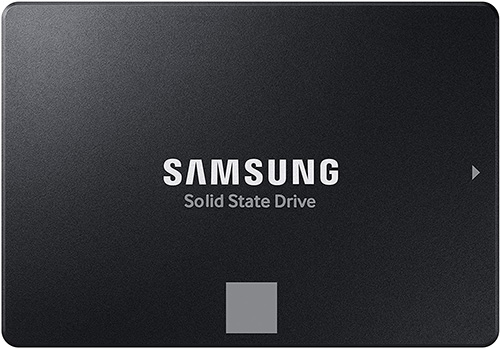
SAMSUNG 870 EVO – 250GB, 500GB, 1TB, 2TB
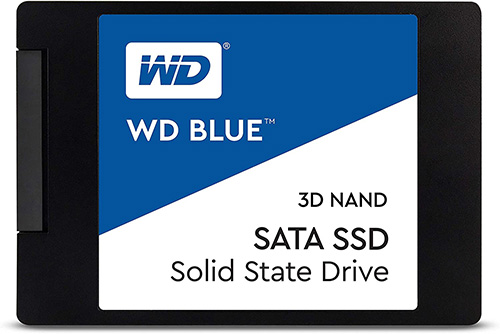
Western Digital BLUE SSD – 250GB, 500GB, 1TB, 2TB, 4TB
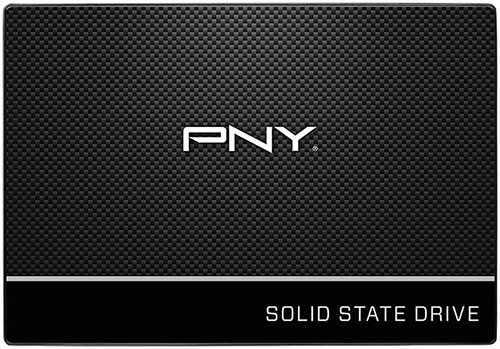
PNY CS900 3D NAND SSD – 120GB, 250GB, 500GB, 1TB, 2TB
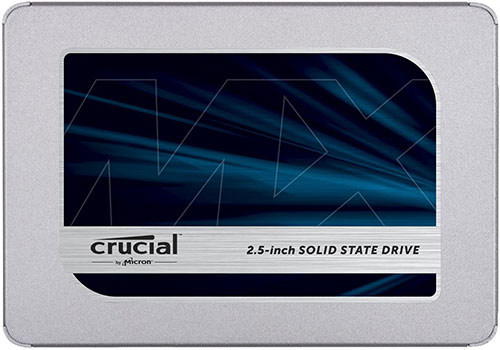
Crucial MX500 3D NAND SSD – 250GB, 500GB, 1TB, 2TB

ADATA SU635 3D NAND SSD – 250GB, 500GB, 1TB, 2TB
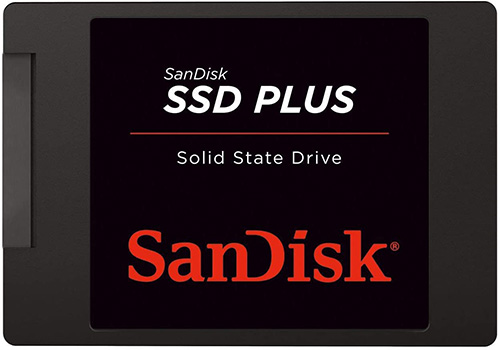
SanDisk SSD PLUS 3D NAND SSD – 250GB, 500GB, 1TB, 2TB

Kingston 240GB A400 – 120BG, 240GB, 500GB, 1TB, 2TB
![]()
Silicon Power 3D NAND A55 SLC SSD – 256GB
4. Best Portable / External SSD For Video Editing
- PNY Pro Elite External Portable SSD
- SanDisk Extreme Portable SSD
- SAMSUNG T5 Portable SSD
- Crucial X8 Portable SSD
- WD My Passport SSD External Portable SSD
- ADATA SE800 External Portable SSD
- Seagate Barracuda Fast External Portable SSD
- PNY PSD1CS1050-960-FFS Elite External Portable SSD
- LaCie Portable SSD High-Performance External SSD

PNY Pro Elite USB 3.1 Gen 2 Type-C Portable Solid State Drive – Read/Write Speeds 890MB/s
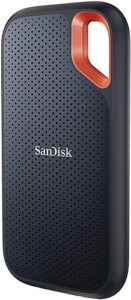
SanDisk Extreme Portable SSD – Up to 1050MB/s – USB-C, USB 3.2 Gen 2
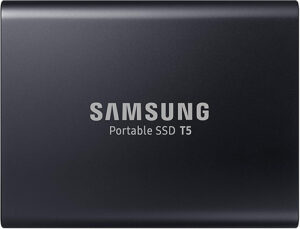
SAMSUNG T5 Portable SSD – Up to 540MB/s – USB 3.1
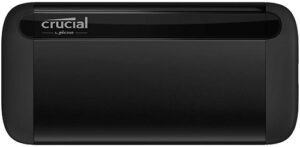
Crucial X8 Portable SSD – Up to 1050MB/s – USB 3.2 – External SSD, USB-C, USB-A
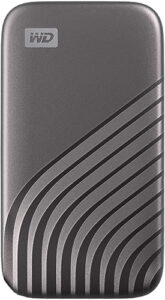
WD My Passport SSD External Portable Solid State Drive, Gray, Up to 1,050 MB/s

ADATA SE800 IP68 Rugged – Up to 1000 MB/s- SuperSpeed USB 3.2 Gen 2 USB-C
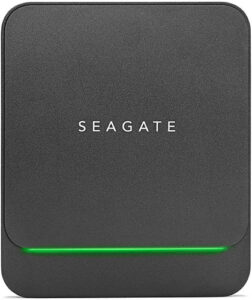
Seagate Barracuda Fast SSD External SSD Portable – USB-C USB 3.0 for PC, Mac, Xbox, & PS4-3-Year – up to 540 MB/s Speed

PNY-960-FFS Elite USB 3.0 Portable SSD – Speed up to 420 MB/s
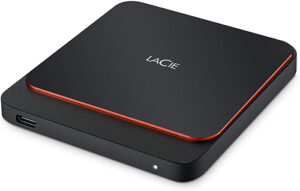
LaCie Portable SSD High-Performance External SSD USB-C USB 3.0 – Speed up to 540 MB/s
5. M.2 vs SSD – Which is Best?
Solid State Drives (SSD) with an average speed of 500 MB/s read/write, are still very convenient for many types of desktop and laptop computers. However, they slowly become unpopular and the main reason is the rise of the new and faster NVMe M.2 SSDs.
Also, SSD drives are limited to SATA III 6GB/s connection which allows speeds up to 600MB/s. On the other hand, M.2 SSD drives connect directly on the motherboard with PCIe 3rd or 4th generation with speeds up to 7500MB/s!
The PCIe x4 M.2 fast storage SSDs are irrationally fast! They help to process and load heavy files such as RAW images taken with high-resolution cameras like the Sony a7R4 (61 Megapixels), the Canon R5 (45 Megapixels), Nikon Z7ii (47 Megapixels), or the Fujifilm GFX100 (100 Megapixels)!
The newest MacBooks and Windows Ultrabooks, iMacs, or ALL-In-One PCs use PCIe M.2 SSDs.
6. M.2 vs NVMe – What are the main differences?
NVMe (Non-Volatile Memory Express) is an interface and M.2 is a form factor. An M.2 storage card can be also a SATA III 6GB/s. However, the speed will be significantly lower than a PCIe connection. Click here to see the infographic and understand the SSD Technology from Kingston.
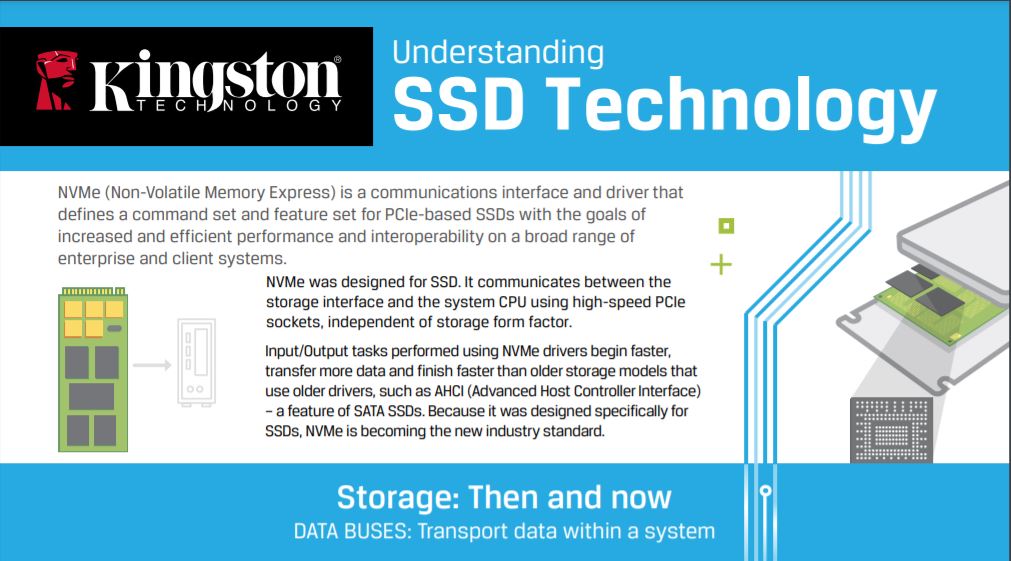
7. Is M.2 or SSD better for video editing?
Video editing requires fast storage reading and writing speeds. When you have large files to edit and export, especially 4K, you will need a faster SSD. The faster the speed, the better the video editing.
That doesn't mean that SATA III SSDs are not good for video editing. It depends on your video editing needs, and the current computer system you are using. You can't just install a new M.2 Gen 4 on an older computer.
Always make sure your motherboard supports the new M.2 PCIe SSDs before purchasing any.
8. Is SSD or HDD better for video editing?
In 2021 Hard Disk Drives (HDD) are mainly used for heavy storage purposes. For a professional photographer, it is essential to have enough space to store all their clients' work and keep backups for safety purposes.
You can install both SSD drives and HDD drives on main desktop PCs. Use the SSD as your main Windows drive (C:) to load and edit your photos and videos. Use the HDD drive as a backup.
When you want to edit a file, simply copy it from the HDD to your SSD (C:) for faster editing.
9. Is 512GB SSD enough for video editing?
Many ask how big SSD for video editing? Is 256GB, 512GB, or 1TB is enough for video editing? The answer is YES and NO. To answer this question you have to answer first the following questions:
- How much free storage space do I have on my (C:) drive?
- Do I have at least 60GB of free space to edit my videos?
- How many applications do I use?
- Do I use other photo or video editing software?
- Do I have other drives to save my video projects or other data?
If you have only one drive (SSD, M.2, or HDD), it is recommended to get at least 512GB of storage space. To look up how much storage you have left on your computer (and how much space all your apps use) go to Windows Settings > System > Storage.
10. Does video editing need more RAM or SSD?
More RAM is required when you run several other tasks in the background while editing. More SSD storage will free-up space and increase the speed of your import/export time.
1TB of M.2 storage is way faster than 256GB. The more storage space you buy, the better the performance. So, it depends on how many tasks you run simultaneously on your computer and how much free space you have.
- 8GB of RAM is for running only the main video editing software and for only Full HD projects
- 16GB of RAM is required to run a few apps at the same time with your editing software and 4K projects
- 32GB of RAM can be used for heavy-duty 4K projects as you are running multiple software in the background.
- 64GB+ of RAM can be used for 4K, 8K projects, and multiple projects.
The best RAM DDR4 Memory is the CORSAIR VENGEANCE RGB PRO.

Check price on Amazon.com.
11. What graphics card do I need for 4K video editing?
The best graphics card you can get for 4K video editing is the one have the money to spend on. The following graphics cards will serve all your needs for 4K video projects and footage.
Budget Content Creator: Gigabyte Radeon RX 580
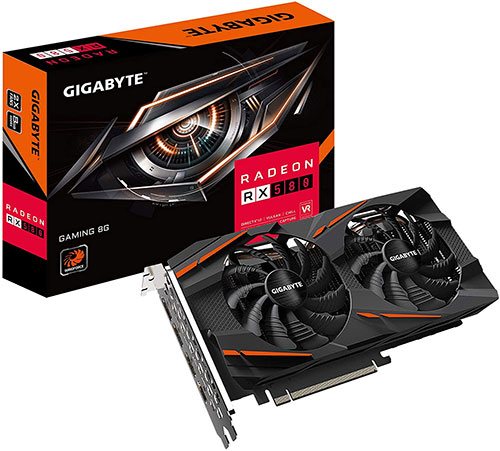
Power Content Creator: GIGABYTE GeForce GTX 1660 Ti OC 6G

Ultimate Content Creator: ASUS TUF Gaming NVIDIA GeForce RTX 3090 OC Edition

12. Why PNY CS3140 M.2 SSD is best for photographers?
- PNY XLR8 CS3140 PCI-E GEN 4 SSD – 7500MB/s
You can pick any SSD M.2 from the above lists but the new PNY XLR8 CS3140 is the fastest-to-date PCIe M.2 Generation 4 SSD in the market!
Lightroom needs processing power, loading/writing speeds, lots of memory, and GPU power. With a faster SSD, you increase import time and export time!

For example, if you want to load 500 RAW files, you need great "reading speed" on your disk which is given with the latest PCIe Gen 4 connection.
If you want to export those 500 RAW images into full-size JPGs (with all new filters and adjustments applied), you need great "writing speed" on your disk, again given with a PCIe Gen 4 M.2 SSD.
BUY ON AMAZON.COM
13. Why WD SN850 Black is the best SSD for video editing?
- WD Black SN850 Tops 7000 MB/s in Speed Tests
If you are a YouTuber or a professional video editor, you need a high-speed drive to load and write 4K or 8K movie files. This is the reason you need the best SSD for video editing which is the PNY XLR8 CS3140, the WD BLACK SN850, or the SAMSUNG 980 PRO.
Video editing files can become heavy if you want the best quality. Also, by adding audio and other elements in your clips, you make the movie files even heavier. A 3 minute 4K time-lapse can take up to 30 min to render in Adobe Premiere Pro. If you install a Gen4 SSD M.2 and enable GPU acceleration, it would take just 3-4 min to render!
BUY ON AMAZON.COM
Always update your video editing software to its latest version. To run a photo or video editing software in 2021, you need a good CPU (AMD Ryzen 7 5800X), at least 16GB of RAM, a fast M.2 SSD, and a good graphics card.
The WD Black SN850 will load your images faster in Lightroom and Photoshop making it easier to work on your computer.

14. Speed Tests with older M.2 SSDs

Image resource: HardwareCanucks

Image resource: HardwareCanucks
15. Where to Buy the fastest M.2 SSD drives?
Amazon.com is a great place to buy M.2 PCIe SSD drives. You can also get an extra protection plan from Amazon!
Summary
I firmly believe that upgrading to a high-speed PCIe Gen 4 SSD will give you extra loading power to edit your photos and videos faster than ever before! Just make sure you buy the right product for your PC or Mac!
Did you like this article? What hardware do you use for photo editing? Have you ever experienced any issues? Please share and leave a comment if you have more information regarding faster and better photo editing.
*As an Amazon Associate, https://johnmakphotography.com earns from qualifying purchases.
Leave a comment
1tb Hdd 120gb Ssd Enough for Video Editing
Source: https://johnmakphotography.com/best-ssd-for-lightroom-and-phototoshop/
0 Response to "1tb Hdd 120gb Ssd Enough for Video Editing"
Post a Comment